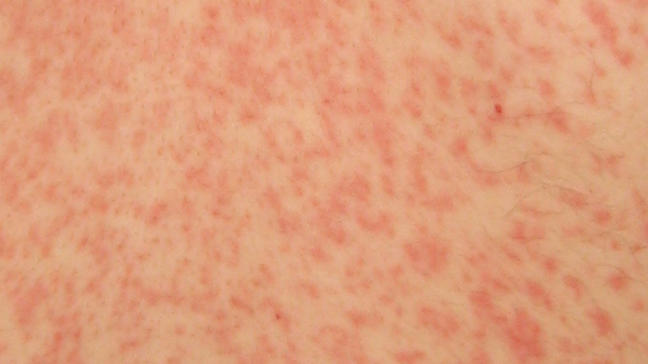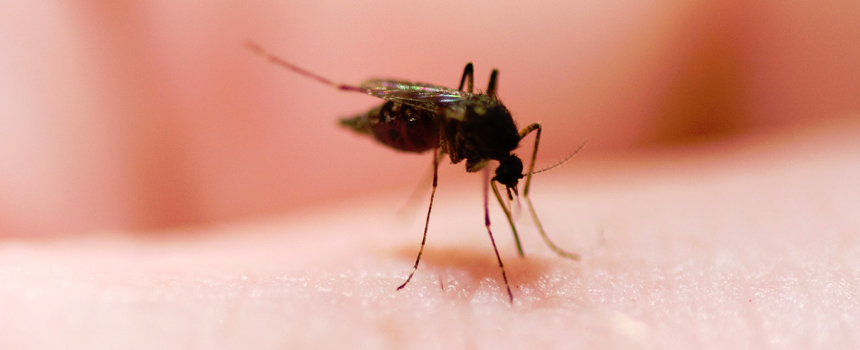Protect Yourself From Two New Insect Bite Diseases
It is crucial for all people to protect themselves as much as possible from bites by vectors of serious diseases. Previously, in the United States mosquito bites were non-issues. That has changed. In the past decade people have died from such bites, largely from West Nile Virus. Now, a new potentially deadly mosquito-acquired virus has struck. Known as chikungunya this germ has largely been isolated to the sub-tropics and tropical areas, including the Caribbean and South America. The main people who need to be concerned about acquiring this infection are Floridians, although it will likely readily spread northward.
Chikungunya is not as aggressive or fatal as West Nile. Of note, the latter can readily cause infection of the brain linings, known as encephalitis. Yet, under the circumstances for people living in the Deep South it is a good idea to take protective action, mainly through the intake of immune-boosting supplements as well as through the use of natural repellents.
Even so, there is no need to find fear in the least regarding these rather rare, newly discovered illness. Of far greater concern are West Nile virus and Lyme disease, which are common causes of morbidity and mortality. Moreover, since naturally-based repellents are non-toxic and can be used frequently, they are a good option for protection versus chemically-based alternatives.
Plus, who wants to get bit when it can be avoided. It’s no fun to be out in nature while getting bit by noxious organisms.
From the CDC is the following:
Chikungunya Hits U.S. Mainland
The first locally acquired cases of chikungunya were reported in Florida on July 17, 2014. These cases represent the first time that mosquitoes in the continental United States are thought to have spread the virus to non-travelers. Though CDC does not expect widespread cases this year, Americans infected when traveling to the Caribbean, South America, or the Pacific Islands may continue to return and bring the virus with them. For updates on locally acquired and travel associated chikungunya cases, visit CDC’s chikungunya website.
Chikungunya is a viral disease spread to people by the bite of infected mosquitoes. The most common symptoms of chikungunya virus infection are fever and joint pain. Other symptoms may include headache, muscle pain, joint swelling, or rash.

***
Yet another noxious vector-borne virus is the so-called bourbon virus. First discovered in Kansas this virus is seemingly rare. Only one case has been determined, yet that case proved fatal, as described below, taken from the CDC’s Website:
Bourbon virus
What is Bourbon virus?
Bourbon virus belongs to a group of viruses called thogotoviruses. Viruses in this group are found all over the world. A few of these viruses can cause people to get sick.
How do people get infected with Bourbon virus?
We do not yet fully know how people become infected with Bourbon virus. However, based on what we know about similar viruses, it is likely that Bourbon virus is spread through tick or other insect bites.
Where have cases of Bourbon virus disease occurred?
As of February 12, 2015, only one case of Bourbon virus disease had been identified in eastern Kansas in late spring 2014. The man who was infected later died. At this time, we do not know if the virus might be found in other areas of the United States.
What are the symptoms of Bourbon virus?
Because there has been only one case identified thus far, scientists are still learning about possible symptoms caused by this new virus. In the one person who was diagnosed with Bourbon virus disease, symptoms included fever, tiredness, rash, headache, other body aches, nausea, and vomiting. The person also had low blood counts for cells that fight infection and help prevent bleeding.
Who is at risk for infection with Bourbon virus?
People likely become infected with Bourbon virus when they are bitten by a tick or other insect. Therefore, people who do not take steps to protect themselves from tick or insect bites when they work or spend time outside may be more likely to be infected. Note: a second documented case has just been diagnosed in Oklahoma; the man has survived (May 2015).
Far more common and treacherous are Lyme and West Nile virus. In particularly, it is important to recognized the signs and symptoms of West Nile virus and to have a high degree of alertness to its possible contraction. It’s not about fear but, rather, merely an issue of heightened awareness:
West Nile Virus
Symptoms of West Nile virus infection include the following:
- fever
- stiff neck
- headache
- weakness
- confusion
- convulsions
- muscle weakness
- vision loss
- numbness
- paralysis
- comatose state
Milder forms of the infection can cause flu-like symptoms and thus it may readily be confused with flu syndrome. These symptoms include fever, headache, body aches, swollen glands, rash on the chest, back, or abdomen, along with nausea and vomiting.

Untreated, the severe form of West Nile can last for several weeks, leading to in some cases severe toxicity to the brain, even causing brain damage.
Yet, it is a most bizarre kind of virus, where it simply may not cause any symptoms despite infecting the body. It is estimated that some eight of ten people an infected mosquito bites will not experience any symptoms at all. Symptoms first begin about 10 to 14 days after the bite.
Treatment/prevention protocol
One powerful means of treatment, as well as prevention, is the use of oil of wild oregano, the edible type safe for daily use. Daily use: that is the secret, that is during mosquito season. It is simple enough to do. The oil may be taken under the tongue and also taken as tiny gelcaps containing about six drops of oil of wild oregano per capsule. This creates a barrier of prevention by causing a kind of antiseptic power of the blood. It has been determined that the human white blood cells have a preference for the active ingredients of wild oregano oil, carvacrol and the other monoterpenes, taking these substances up and utilizing them for the destruction of pathogens.
Yet another means of protection is to rub the edible oil of wild oregano on the arms, neck, and other exposed parts. Mosquitos hate putting their probiscus’ on the spicy, hot oil. Plus, the oil can be used topically on any mosquito bite with great results, including the elimination of itching and rash.
The individual should make the effort to wear protective clothes; shorts are not the best idea in mosquito-infested zones.
People living in tick zones should also take the oil of wild oregano preventively.
For mosquitos it is a good idea to avoid bananas, as they contain an aromatic oil that attracts mosquitoes. The consumption of refined sugar also leads to a drawing effect by these pests.
So, stay mosquito and tick bite-free through the powers of wild oil of oregano and multiple spice repellent sprays, along with taking the necessary precautions to reduce the risks for getting bit. Moreover, if a person gets a mosquito-acquired virus, it is essential to take immediate action. In addition to medical care the oil of wild oregano must be used aggressively as drops under the tongue, five drops or more of the mountain-grown, wild oil multiple times per day, even on the hour or half-hour.


